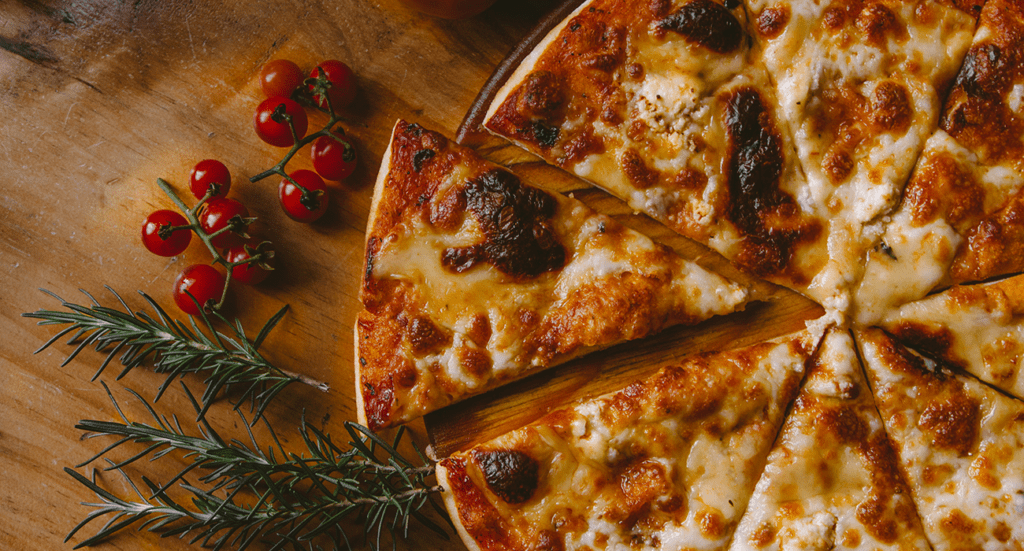
- Robert St. John dishes on the savory pie the world has come to love while offering a delicious recipe for prosciutto pizza.
Naples is the birthplace of pizza. It’s an ancient and historic seaside city that can be a little scary at times these days, but it is Ground Zero for the savory pie the world has come to love. The Neapolitan version has been around Southwestern Italy for more than 500 years. Pizza eventually travelled across the Atlantic and through Ellis Island in the late 1800s. The first restaurant to sell pizza in America was Lombardi’s in New York.
It took another 75 years for pizza to reach my hometown of Hattiesburg, MS. There was a drought of good pizza places in the 1960s and early 1970s. Pasquale’s, a small chain, and Pizza Hut, a large chain, were it. But at 12-years-old I was happy with those choices and ate pizza, often.
Nothing has changed.
In the mid 1970s a pizza joint called Mr. Ed’s opened. The pizza there was excellent. It’s still some of my favorite pizza I’ve ever eaten— America or Italy. The crust was thin, the tomato sauce had a nice depth to then flavor profile with just a touch of sweetness, and the mozzarella was different than any other mozzarella I had eaten up until that time. Ed cut it into small squares and I ate there once a week in my teens and early twenties.
To my recollection Ed was from somewhere in the Midwest and had been a college student at University of Southern Mississippi. He opened Mr. Ed’s in a small building on Hardy Street that used to house a Dairy Queen, then found a financial backer and opened in a building they built from the ground up. I heard they opened restaurants in a Mississippi Coast city and a suburb of Jackson and the business didn’t have the infrastructure to support such rapid growth. All three closed. That robbed us of what I still remember as some of my favorite pizza, ever.
I love pizza. I’ve always been a firm believer that even bad pizza it’s pretty good. In Italy I’ve eaten pizza from the southernmost tip of Sicily to the Dolomites. Like most of the food in Italy pizza differs slightly from region to region.
My favorite pizzeria in Rome is Piccolo Buco. I’ve been eating there since 2011 when it was just a basic trattoria that served typical Italian fare and a few pizzas. Several years back Luca Issa, Piccolo Buco’s owner, ditched all the Italian classics on the menu and did a deep dive into pizza culture. He basically has a PhD in pizza. Over the years, I’ve probably sent several hundred people to eat there. None of them have ever been disappointed. There’s a fairly long line there these days and it’s one of the few places that I would wait in line for 30 minutes.
Issa’s commitment to fresh ingredients and quality is unmatched. Piccolo Buco receives shipments of fresh Buffalo mozzarella from a small farm outside of Rome every day. The crust at Piccolo Buco is a combination of the very flat, very thin style of Tuscan pizza with a substantial outer crust. It’s the best in Rome.
I’m a restaurateur by trade but three to four months out of the year I host tours in Europe, mostly Italy. When I’m hosting a tour in Tuscany, we stay just outside of the small hamlet of Barberino-Tavarnelle. For almost a thousand years they were two separate townships. But a few years ago, they combined their two city governments and became one entity. The combining of those two cities— that I have spent probably spent two years of my life in over the past decade— created a Ground Zero for pizza in Italy. At least as far as I’m concerned.
There are four distinct pizzerias in Barberino-Tavarnelle and I eat at all of them, often. The beauty of this Tuscan town, that is smaller than McComb, MS, is that there are virtually no tourists. I almost consider myself a part time resident at this point, and when I host groups here, they are typically the only tourists for miles. We get to submerge ourselves in true Tuscan culture. This is not Epcot Italy. We do what the Tuscans do, go where the Tuscans go, and eat where the Tuscans eat. When it comes to pizza, they’ve got it nailed.
My first exposure to pizza in this area was in 2011 in a pizzeria called Archibugio in the small medieval town that, at the time, was known as Barberino. The pizzeria was tiny and located in a building that had been built over 700 years earlier. I love thin pizza, and this was the thinnest pizza— by a long shot— I had ever eaten. It had minimal ingredients and was, to my taste, pizza perfection.
When leading the first group I ever hosted over here in 2016 we dined in the original Archibugio. A few years ago, the business moved just down the Via Roma into a larger building with substantial outdoor dining space. Luckily the pizza didn’t change at all. It’s still in my rotation when I am boots-on-the-ground over here.
The pizzeria I dine in most often is Vecchio Piazza. That’s not a misspelling of pizza. Translated it means the “old square.” As one would imagine, it’s located directly across from what used to be the old town square of Tavarnelle. I have hosted well over 800 Americans at Vecchio Piazza over the years. To my knowledge, no one has ever left disappointed. The Vecchio Piazza pizza, like Archibugio, has a razor-thin crust, and the tomato sauce is very minimal, as are the ingredients.
The method by which the locals eat pizza in Tuscany is to order an entire pizza for each guest. Most menus are loaded down with dozens of options. But the pizzas are so thin, and the ingredients are so minimal, that even a small person can handle an entire pizza.
My go-to is typically a Buffalo Margarita. I have them add extra basil. Occasionally I order what they sometimes refer to as a spicy salami. It looks a little like our pepperoni, but it’s much spicier. They make a mean white pizza with truffles and an excellent dessert pizza using Nutella, thinly sliced strawberries, and bananas. I love that one so much I’ve replicated it at our restaurant in Enzo.
La Fornace is another pizzeria in Tavarnelle that ends up in our rotation. I’ve been eating there for 13 years. The pizza there is a little closer to the Piccolo Buco variety in Rome where the edges of the crust are more substantial and bread like.
A new entry to the pizza game in this part of the world is Pico. Chef Giovanni is a world-class pizza chef. He’s from Naples and stays true to that city’s roots when it comes to pizza, although he’s taken it up a level. The crust— almost exactly like Piccolo Buco in Rome— is very thin in the center and substantial around the edges. He incorporates a lot of exotic ingredients in the 10-12 pizzas he offers. Instead of offering beer he offers an extensive cocktail list. Like many Italians, Giovanni believes that beer and pizza are yeast on yeast.
I have loved this area for years. The people, the architecture, the landscape, and the ancient history, are all a part of what makes this are special. The fact that they have so many outstanding pizzerias seals the deal.
Onward.
#####
This Week’s Recipe: Prosciutto Pizza

Always purchase the best prosciutto you can find. It makes a huge difference, especially since there are only five ingredients.
INGREDIENTS
- 1 each Portion of pizza dough (see recipe)
- 2 Tbl Marinara (see recipe)
- 2 slices Fresh buffalo mozzarella, sliced ¼ inch thick
- ¼ lb. Prosciutto ham, sliced thin and torn by hand into 2 inch pieces
- 4-5 leaves Fresh basil, chiffonade
- Flour as needed
- Cornmeal as needed
INSTRUCTIONS
Preheat a pizza stone at 450 in the oven.
On a floured surface, roll out pizza dough very thin and stretch into a rectangle about 6 inches by 8 inches. Transfer to a pizza peel.
Spread the marinara across the dough. Tear the slices of mozzarella into roughly 1 inch sized pieces and sprinkle across the dough along with the torn prosciutto ham. Sprinkle the preheated pizza stone with cornmeal, slide the pizza off of the peel and bake for 8-10 minutes until the edges of the dough begin to brown and the cheese begins to bubble.
Stack the basil leaves on top of each other, roll them up and slice to make the basil chiffonade. Sprinkle over finished pizza.











